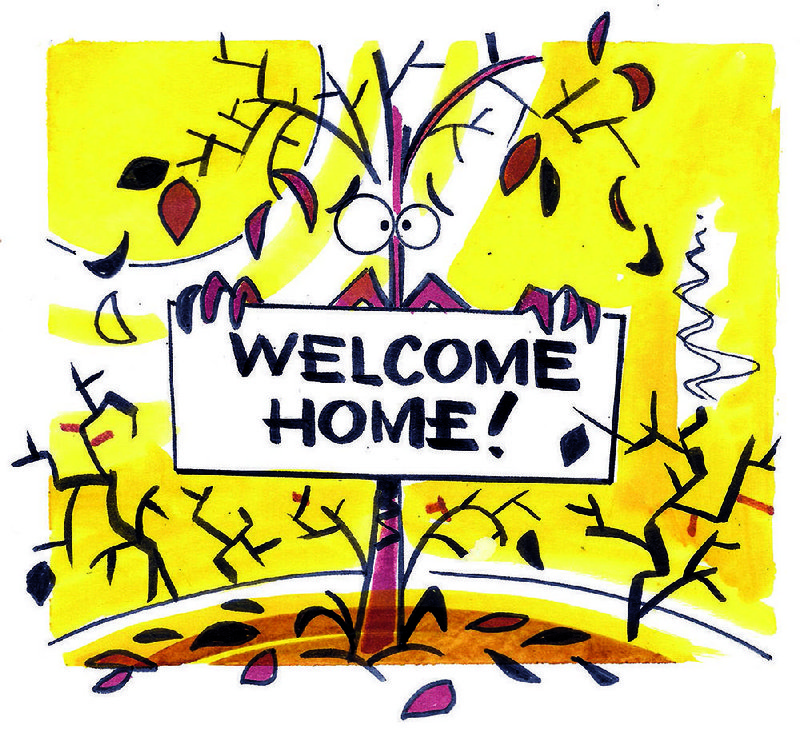Q I am trying to become more "habitat friendly" with my yard and have been successful except for two shady flower beds in my backyard. This faces north, and the beds are raised and are under the eaves of the house. One of them gets midday sun, but the other doesn't, as there is a large oak tree to the west of it. I have hostas planted there now, and they do very well. The other has ferns, and they seem to be well suited for this bed. I enjoy these plants, but would like to replace them with something that would attract birds, butterflies and or bees. Any suggestions?
A There are several perennials and even a few shrubs you could try that thrive in the shade but bloom and attract pollinators. Among the shrubs, there are several varieties of dwarf cherry laurel -- including Otto Luyken and "Nana." They are evergreen and produce spikes of fragrant white blooms that attract bees and butterflies. Abelia will grow in light shade and blooms all summer; there are varieties that vary in mature height and foliage color -- some green, others yellow, silver or variegated patterns. Clethra is a deciduous shrub that blooms in midsummer with white or pink flowers and, again, variety will determine mature height. For perennials, consider evergreen hellebores, which bloom in the winter and are a source of pollen and nectar for bees during a time of year when they can't find many blooming plants. Columbine is an early spring bloomer for shade, and cranesbill geraniums come in white, pink or purple and are good shade bloomers. Heuchera plants are grown more for their foliage, but they do produce spikes of flowers in late spring. Toad lilies also bloom well in the shade and attract bees. Monarda or bee balm will bloom well in light shade and attracts a host of pollinators -- but be cautious: It is in the mint family and can spread.
Q After traveling for nine weeks during the worst heat of the Arkansas summer, we returned home to much damage in our garden [the reader sent a photo]. I am penitent and dreaming of a sprinkler system, but how can I best salvage these plants? Should I try? There is green foliage at the base, but the top two-thirds are crispy.
A Miraculously, the plants are not dead. I think they died back at some point and have been making a comeback, thus the green growth at the base. Cut out all the deadwood, lightly fertilize and water. Big leaf hydrangeas have never been classified as a drought-tolerant plant and do need supplemental water in the summer. They set their flower buds in late summer to early fall, so see if you can't get enough growth on them to set flower buds before our first frost.
Q About four years ago we helped install a large flower bed on our local golf course. It is quite large, around 1,800 square feet. We planted loropetalum, pampas grass, some lilies, some spiraea and edged with liriope. The bed has matured well, but we did lose some young plants in the first year. The problem we face the most is weeds. We added topsoil and have added mulch each year. We have even spot-sprayed with Roundup. Do you have any suggestion on how we can get control of these nasty weeds and creeping Bermuda grass in this bed?
A Perennial weeds including Bermuda grass are the most difficult to control in flower beds. Make sure you have a distinct border between lawn and bed to help keep the grass from encroaching. I try to hoe out or pull as many weeds as possible, then lay pieces of cardboard on top of the soil underneath the mulch. Cardboard is breathable, so water and oxygen make it through, but it helps suppress weeds. I repeat this process each spring, and it definitely helps with weeds, but the key is to start as clean as possible.
Q I have grown dragonwing begonias for years and they bloomed well. This year there are no flowers. Why?
A Dragonwing begonias bloom best when they get bright light or sun in the morning and protection from hot afternoon sun. If they are growing in too much shade they will not bloom well.
Janet B. Carson is a horticulture specialist for the University of Arkansas Cooperative Extension Service. Write to her at 2301 S. University Ave., Little Rock, Ark. 72204 or email her at
jcarson@arkansasonline.com
HomeStyle on 09/01/2018
